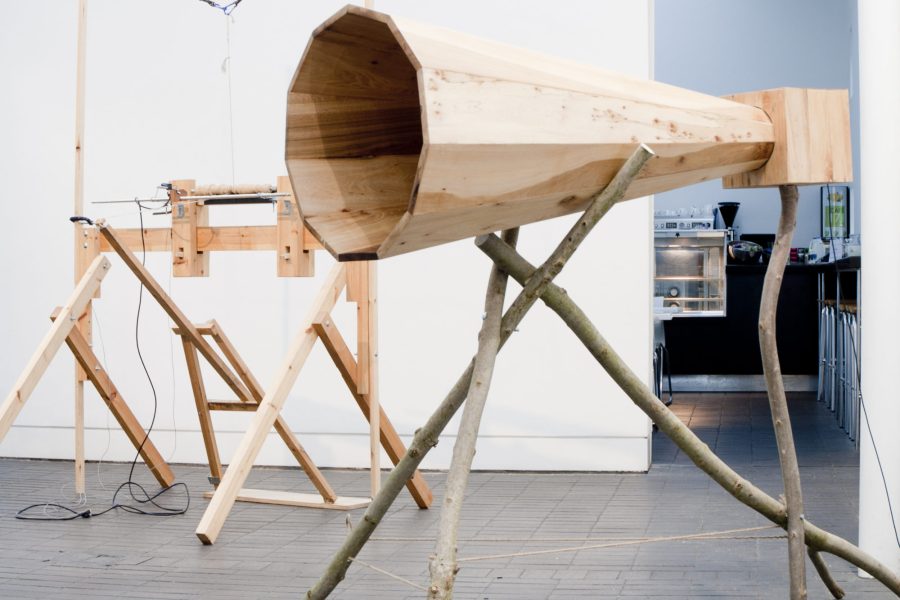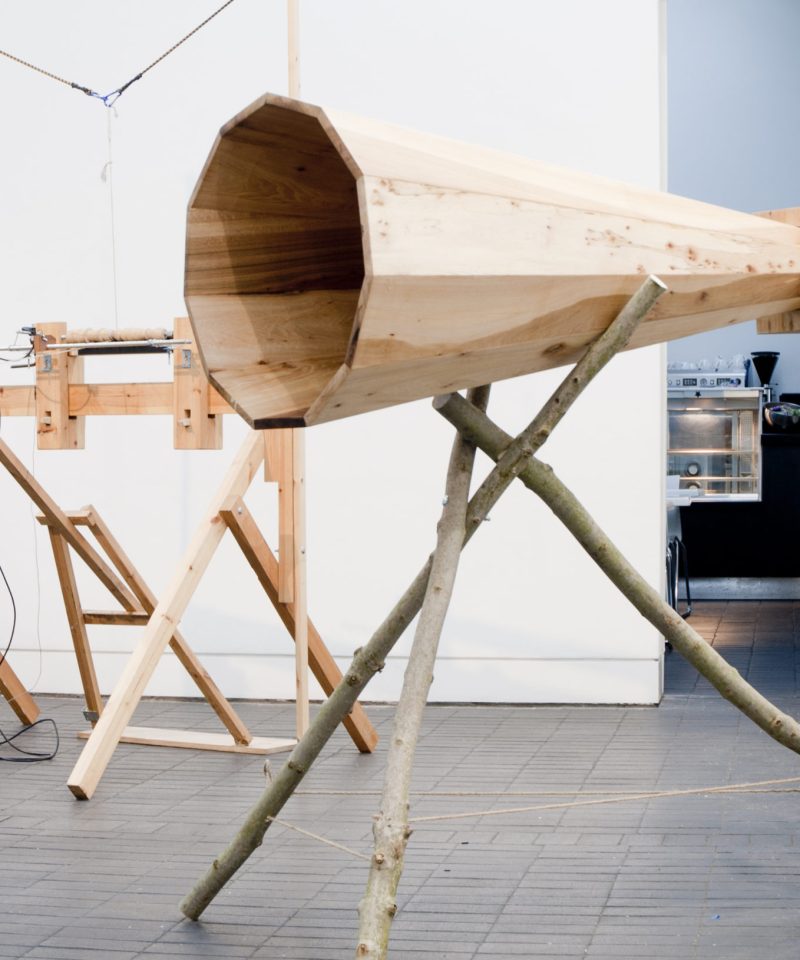The new TERRA show just opened at the Jerwood Space brings together five sets of sculpture, of “artists considering the relationship between their practice and the environment outside of the white–walled space,” curated by Hayley Skipper and Anthony Mottershead of the Forestry Commission England at Grizedale Forest and its sculpture park.
The world is a big place. And while humans have managed to colonize the planet pretty well, it’s only more recently (ie less than a century) that we’ve started to look around a bit more and ask what we’ve been doing with our planet and if we can keep on doing it. Humankind have been pretty keen to distinguish themselves from the rest of the organisms on the planet, and since the Industrial Revolution the separation of human from ‘nature’ has been increasingly understood as a dichotomy. Nowadays, city-bound people plan their ‘getaway to the country’ months in advance.
So to say ‘Nature’ is a theme here is maybe a red herring, and also pretty broad and spring-loaded territory. But it is still part of the territory defining the show. TERRA steps directly into the murky areas of the questions raised by calling on ‘the natural world’ with a range of approaches, from the simulation, manipulation and magnification of what we might see or try to experience as nature.
Looking to nature usually carries with it the accusation of Romanticism, the return to nature spurred on by the rise of industry, or in more modern parlance a utopian idealism. We might be at some sort of turning point in how we conceive of the debate though. Shaping alot of the thinking of the past decades have been thinkers like Buckminster Fuller or Gregory Bateson, who looked to nature as a sort of benign governing force upon which to model our own actions. While their voices have been necessary mediators of attempts to curb our remarkable use of this planets resources, recently their views have also been subjected to criticism weary of their idealisations of the mechanisms behind their understandings of the natural world – see, for a bombastic example, the 2nd episode of Adam Curtis’s recent BBC subjective documentary All Watched Over By Machines of Loving Grace.
In contemporary art, there have been a few recent examples to try and explore this territory, such as the Barbican’s 2009 Radical Nature exhibition, or this year on a smaller scale the Over Your Cities Grass Will Grow group show. But on a more long-term basis, alongside those efforts in Grizedale, are other organisations, such as the garden and contemporary art centre Instituto Inhotim (see also Dan Fox’s view in On Nature, published in frieze) or the residency program and efforts of Campo Adentro (‘Inland’) in Spain. These efforts necessarily have to tackle head on the tangle of a contemporary pastoralism, mediating realism, criticality and the very real ghosts of what’s conceived of as a ‘pleasant’ countryside. These efforts try to ask in new ways how we understand ourselves in relation to the world around us, and whether that world can be considered ‘natural’, how deep the oppositions might go.
Joy Sleeman’s essay accompanying TERRA at one point quotes Maurice Merleau-Ponty, saying, “all is fabricated and all is natural with man.” I would think this would mean, for Ponty, that in our apperception of the world around us we experience and interact with things via the same channels, that it is all constructed and intertwined with us and so what really is the distinction between ‘natural’ and ‘man-made’?
But the quote also made me think of a line Jonathan Meades once said, that “Rivers and fields no more just happen than do buildings. They’re industrial sites.” (I think said in his Father To the Man episode of the Abroad Again series) The quote struck me when I heard it, because it underlined in an apparent way firstly how I had come to think of ‘industry’ as factories, large buildings churning out smoke. But also how our relationship to land has always been industrious, even before agriculture, and also furthermore how much we have affected and shaped nature to the point that it is rarely, if ever, directly experienced. Maybe the ‘natural’ simply doesn’t exist anymore.
Meades has had his own rallying against the idealisation of the rural for some time (see his 2002 article, Death to the picturesque!, and Our rural landscape is a fiction, published in the Guardian in 2010), but I think what’s important is the realization that what we understand as Nature is a cultural construct. This also shapes our expectations, whether it’s how we look at a computer screen as opposed to a flower. Over the next few weeks I’ll look in more detail at how each of the artists in TERRA have dealt with these issues, as well as speaking to the curators, looking at our use of materials in the art world, and a few other stop-offs via Smithson, Vonnegut, and a few other guests.

